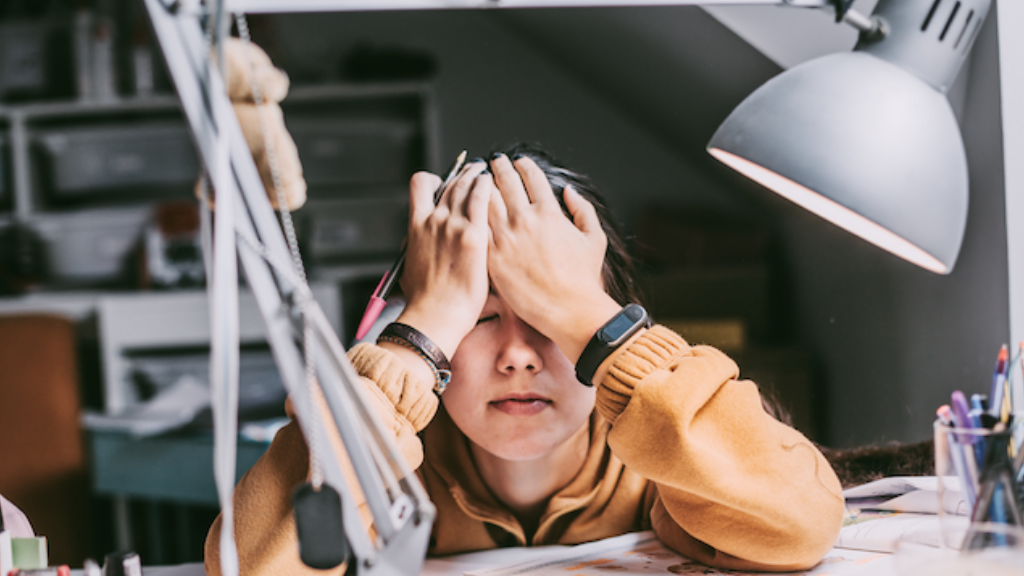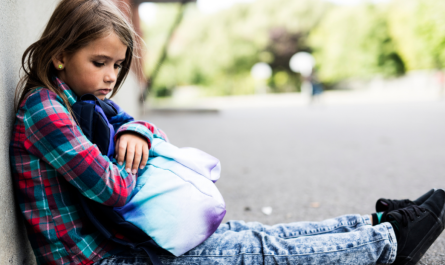COVID-19 pandemic has turned the spotlight on mental health issues among children. They experienced major disruptions schools shifted to online mode, with social contact and outdoor activities severely limited. The Delta strain of the COVID-19 is now raising new concerns as schools are preparing to reopen this fall.
According to the Center for Disease Control and Prevention (CDC), mental health concerns in children may be “exacerbated by stress related to the pandemic and abrupt disruptions to daily life associated with mitigation efforts, including anxiety about illness, social isolation, and interrupted connectedness to school”.
Data analyzed by the CDC shows that“the proportion of mental health-related Emergency departments (ED) visits among children increased 66%, from 1,094 per 100,000 during April 14–21, 2019 to 1,820 per 100,000 during April 12–18, 2020. The highest weekly proportion of mental health–related ED visits occurred during October for children aged 5–11 years (1,177 per 100,000) and during April for adolescents aged 12–17 years (4,758 per 100,000).”
Since the beginning of the COVID-19 pandemic, one in four people under age 18 have struggled with suicidal thoughts. The report also claims that it increases largest among adults aged 18–29 years and those with less than a high school education. (Unable to find the source of this study)
What do experts say about mental health?
Speaking to USA Today, Anna Mueller, a suicide researcher and professor of sociology at Indiana University, said that students are struggling to imagine their future and are forced to ask questions like: What is the world going to look like? What would college look like? What is employment going to look like?
Unprecedented restrictions on people’s movement, coupled with isolation, loneliness, and disrupted daily routine, has caused anxiety and depression in adults and children.
Active Minds, a Washington-based nonprofit organization dedicated to raising mental health awareness among college students, conducted a survey in which one in five college students reported that COVID-19 has significantly worsened their mental health.
The report further adds that 80% of them felt COVID-19 has negatively impacted their mental health. Roxane Cohen Silver, a social psychologist at the University of California, Irvine, states that the “impact on a child’s sense of safety depends on the extent to which the family is affected.” “If there is a loss or if the family has a drastic change in their economic consequences, this event would shape the children’s view of the world,” she says.
According to Ms. Silver, the impact of the pandemic is harder than what 9/11 did with children in the U.S.Parents’ biggest concern is children’s mental health.
A JED Foundation on children’s emotional and mental health challenges during the pandemic
This reveals that nearly two-thirds of U.S. parents believe that their child has recently experienced a mental or emotional challenge, including suicidal thoughts. Overall, the report highlights that 23 per cent of children in the 9-12 age group experienced loneliness due to social isolation, 23 per cent anxiety,20 per cent trouble concentrating, 18 per cent difficulty in handling emotions, 12 per cent depression, and 5 per cent suicidal thoughts.
How to deal with mental health?
To mitigate the COVID-19 related mental health illness, especially in children, Thomas Cooper, professor of media ethics at Emerson College in Boston, recommends limited viewing prime-time news related to COVID-19 “When you hear about COVID-19 again and again and again and again, all of that leads to a kind of emotional poisoning too,” he told the Time.
CDC believes that parents, families, and health care providers can play a significant role to get students out of their mental trauma, but schools can play a bigger role than all of them. According to CDC, schools can provide opportunities for students to engage in physical activity, health services, and develop social-emotional learning.
As the need for social interaction is stronger in children, they are the most vulnerable to stress and anxiety. So, it becomes the collective responsibility of parents, family and community to help them navigate through the crisis.



